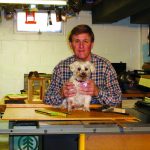We may receive a commission when you use our affiliate links. However, this does not impact our recommendations.
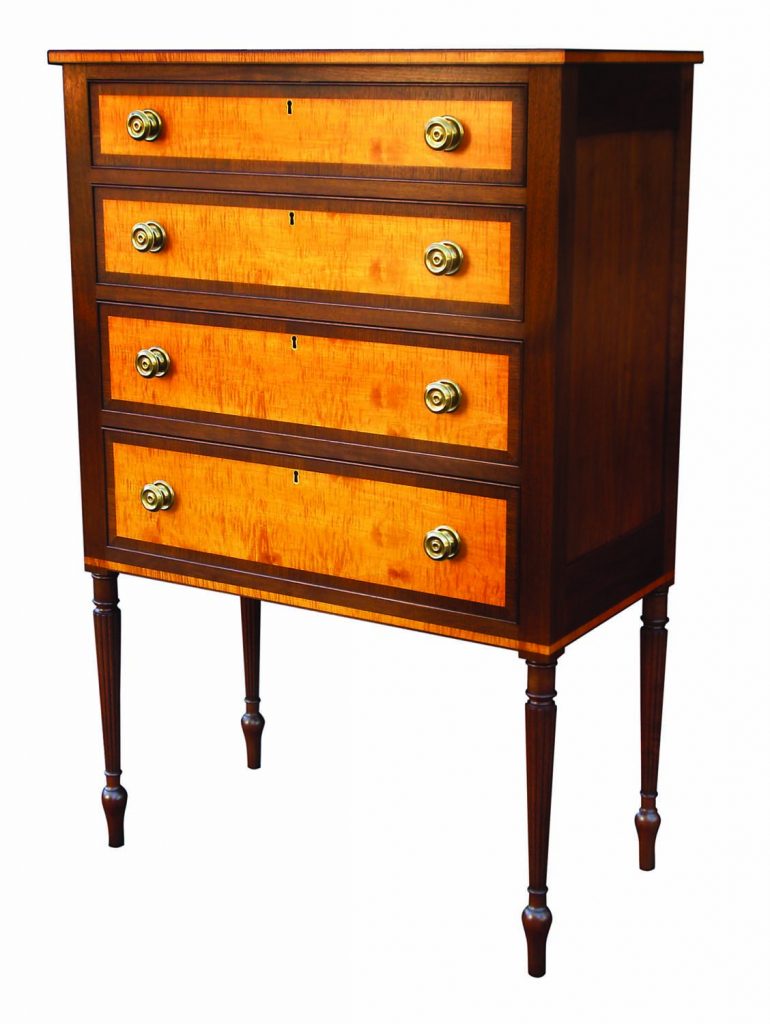
Sheraton-inspired. Brooke Smith’s masterful interpretation of a traditional form expresses classic design features in a new way.
Creativity is a slippery thing. A lucky few are born with a creative streak that seems to flower without effort. Others (most of us) have to work at it to unlock our creative potential. Rarest of all is that bird that combines generous natural gifts and hard work.
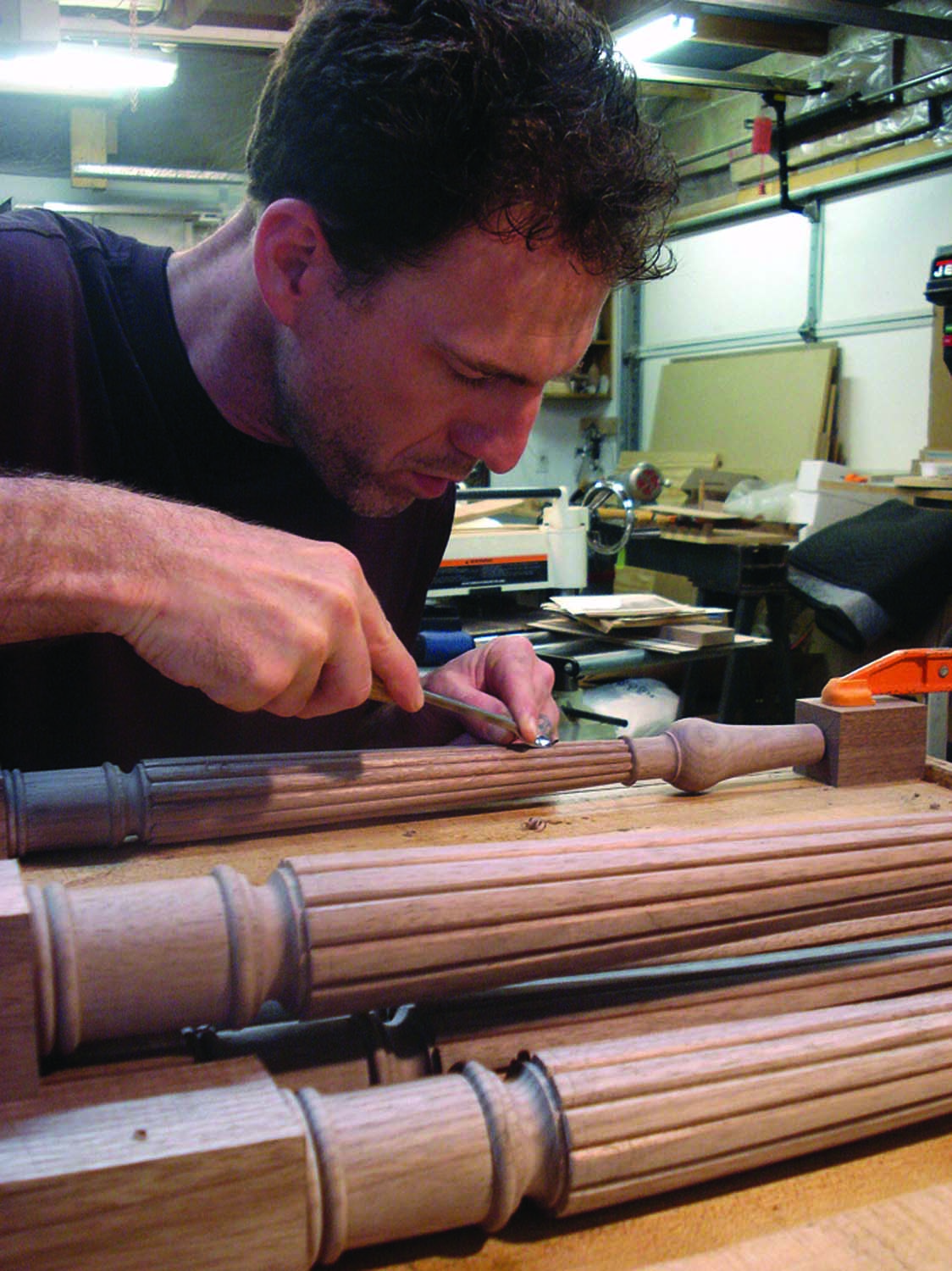
Reeds. Here, Smith carves reeds on a turned leg.
Words like “artist” and “master” come to mind when describing furniture builder Brooke Smith of Columbus, Ohio. His small one-man studio turns out exquisite furniture that spans a broad range. I liken Brooke to a classically trained violinist who’s comfortable playing Bach, rock or bluegrass. His work encompasses corporate boardroom tables, high-style period reproductions and one-off modern studio pieces. Craftsmanship and attention to detail are first-rate, but the thing that most stands out is his talented designer’s eye.
A Wide Array of Outstanding Work
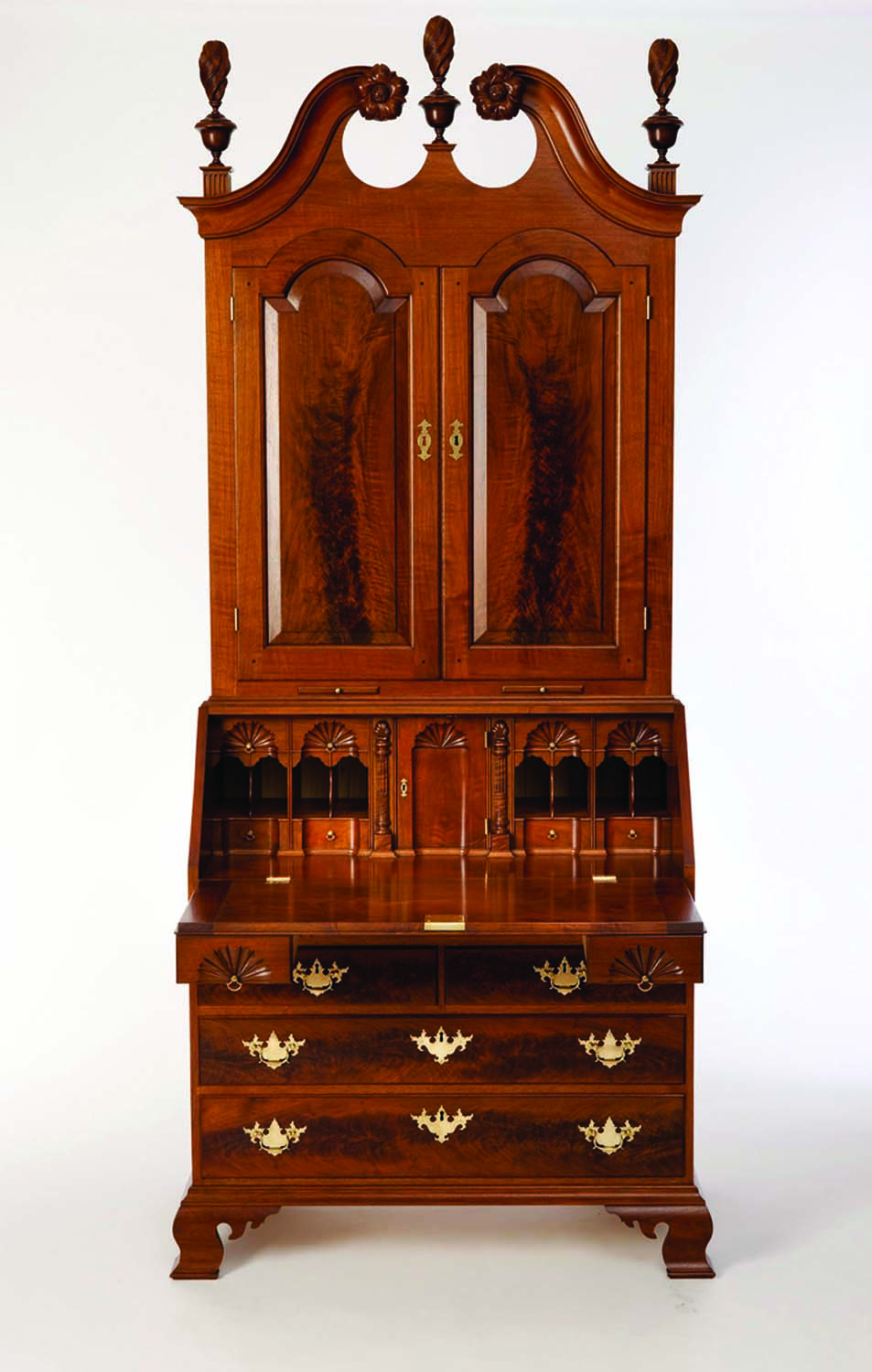
Traditional design. This walnut secretary is a tour de force showcasing Brooke’s skill as an artisan and his mastery of working in a traditional design language. Notice the figured wood in the carved columns in the detail of the walnut desk interior. Carved rosettes and finials grace the pediment.
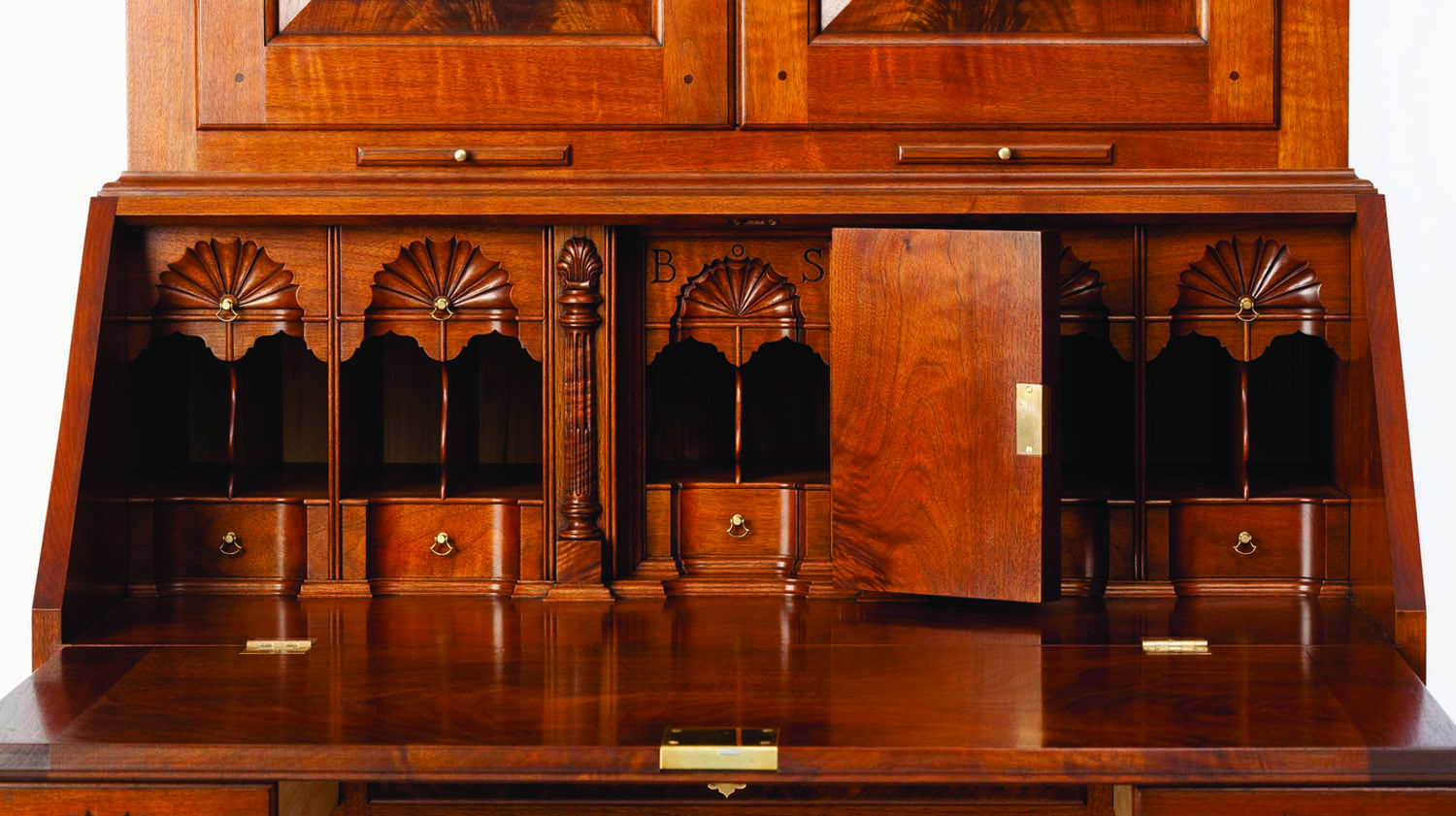
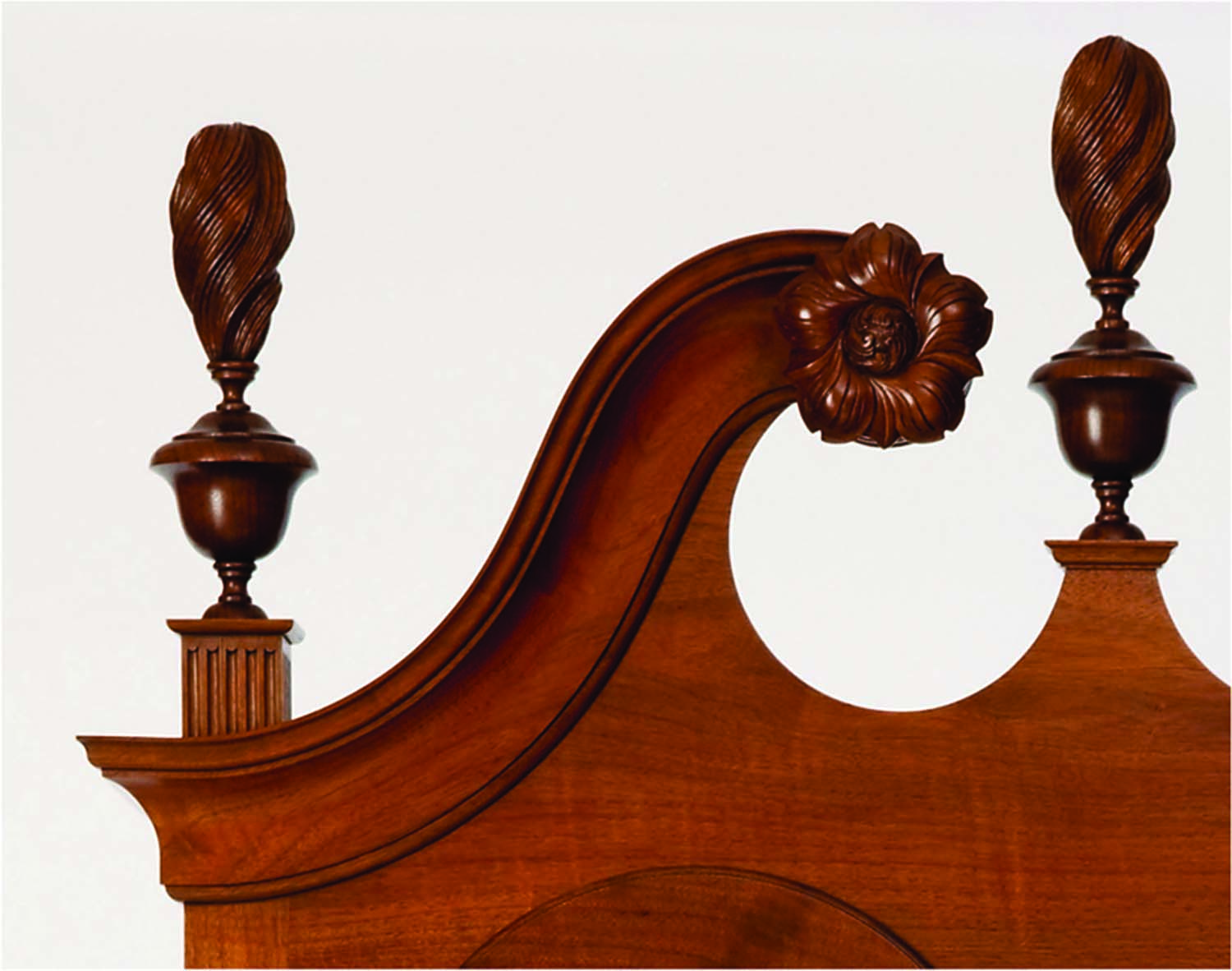 Take a look at a sampling of Brooke’s work. This Sheraton chest (above) is his answer for a client who wanted a traditional piece but elevated up off the floor. If you didn’t know better you might call it a Federal highboy (there was no such form). It’s inspired by a chest from the shop of Thomas Seymour, an early 19th-century
Take a look at a sampling of Brooke’s work. This Sheraton chest (above) is his answer for a client who wanted a traditional piece but elevated up off the floor. If you didn’t know better you might call it a Federal highboy (there was no such form). It’s inspired by a chest from the shop of Thomas Seymour, an early 19th-century
Boston cabinetmaker; one senses that Thomas would nod in approval. The dining table shown at right is a nice example of Brooke’s work in a modern style with restrained inlays accentuating each corner. The walnut secretary, shown at above, is a wonderful display of Brooke’s carving talent. This is his own interpretation built around a traditional form, incorporating classically carved elements showing a mastery working in a traditional style.
Recipe for a Talented Builder
Brooke shared with me his creative journey. It took some unusual twists that combined to make him the accomplished artisan he is today. Although he had some generational woodworking family lore, Brooke’s first impulses drew him down an artistic path.
He attended the Columbus College of Art and Design and earned a bachelor’s degree in illustrative design. Shortly after graduating, he found work at a museum working with an exhibition designer, where he learned how to showcase fine art.
His creative journey took a fortunate twist when he found work at a framing studio specializing in high-end frames for the fine art market. There he had a chance to try his hand at wood carving and found a new, exciting medium to explore in addition to his love of painting. These were expensive, sometimes heavily carved frames, often overlaid with gold leaf. He spent four years as a professional carver, becoming fluent in creating the classical ornament associated with carved mouldings and frames. At one point Brooke was called on to carve a pair of massive mahogany frames to house murals for the statehouse. Not your average picture frame, they measured 101⁄2‘ by 131⁄2‘ and weighed in at more than 450 pounds each.
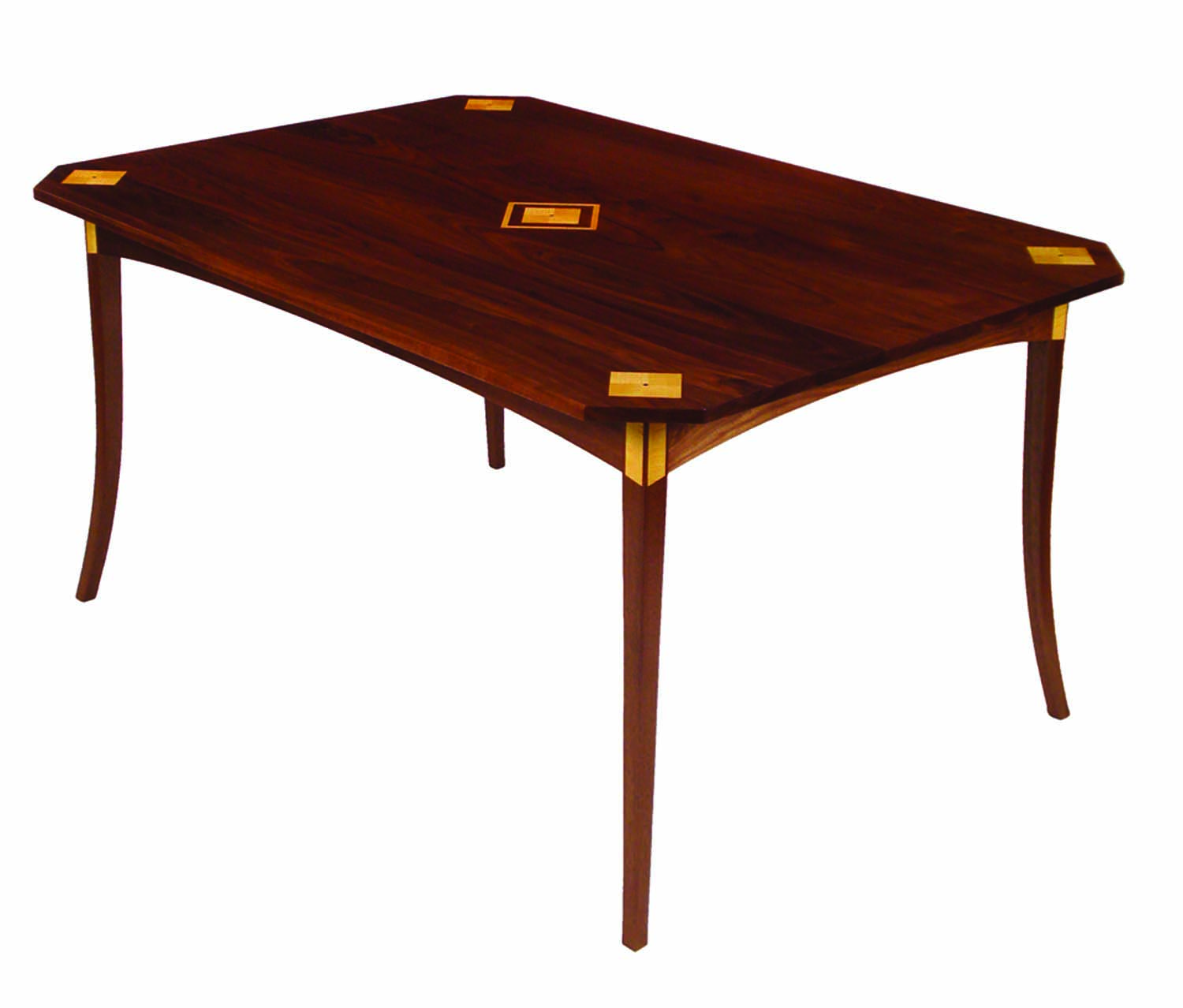
Restrained beauty. This table shows a playful yet restrained use of ornament to highlight the legs and top.
The desire to go beyond carving frames and begin building furniture led Brooke to enroll in the furniture-making program at the University of Rio Grande. Here he learned solid construction skills to provide a base for his creative energy. Today Brooke builds furniture for an eclectic group of loyal clients in the Columbus area.
Bringing Creativity to the Client
We spent time in his crowded but efficient shop discussing the creative process.
Brooke works closely with customers, often visiting them at their homes numerous times while working up a design. More than collecting functional requirements, the visits are about getting a feeling for the personality of the interior setting and about building a relationship with the clients. One can sense that Brooke really considers clients as friends and views building something to grace their homes a privilege.
Rough sketches are taken from the initial visit and developed into a series of drawings, often four or five, to present a number of options to the client. Working through a series of design ideas helps both Brooke and his client find what they are after. These preliminary drawings helps him gain a better idea of what they like and dislike, paving the way to a final design.
A Tip from Brooke’s Notebook
Once he’s close to a final concept, Brooke takes an extra step to help the client visualize how the piece will look. He uses watercolors to color in the pencil drawing and give a sense of how the wood tones will bring the piece alive. He finds it helps them picture the finished work. This seemingly small detail can help cement a decision and allow work to go forward.
After seeing his drawings, I immediately dropped by an art-supply store and picked up an assortment of markers in earth tones, burnt sienna, raw umber, amber and mahogany. Regardless of whether your client is a discerning art collector or your better half, this is a great tip to help sort through the creative process and finalize a design.
I finished my interview asking this talented builder a few quick questions: Favorite wood? Walnut. Favorite finish? Shellac, brushed on and rubbed out. Favorite tools? Without hesitation and spoken like a true designer, he held up his hands and said, “These hands and eyes.”
George is the author of the DVDs “Unlocking the Secrets of Traditional Design” and “Unlocking the Secrets of Design: Moldings“ both from Lie-Nielsen Toolworks. See more of Smith’s work at his web site.
Here are some supplies and tools we find essential in our everyday work around the shop. We may receive a commission from sales referred by our links; however, we have carefully selected these products for their usefulness and quality.








